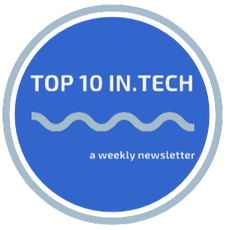|
Welcome to the Benchmark Holiday special! This is a compilation of valuable benchmark data reported from across the webs in 2022 for you to put to good use.
1. SKOK: David Skok is a legend in the SaaS world, and I have written about his work extensively in the past, as well as convincing him to speak at an event. His former reports are now run in partnership with KeyBanc Capital Markets (KBCM), and the 2022 version is here - excellent benchmarks for any SaaS business. 2. EXPANSION 1. Acquiring customers is not enough for a SaaS company's sustained long-term success. Expansion strategies are pragmatic practices that any good SaaS company needs to grasp, as 46% of new ARR bookings are attributable to cross-sell/up-sell activities. Larger companies use this strategy more heavily than their smaller counterparts (2x more). This is likely due to relying on something other than pure acquisition strategies as the business matures. 3. EXPANSION 2: Expansion is such a big deal that OpenView Partners have gone to town to benchmark this metric with an extensive Expansion SaaS Benchmarks report in 2020 (downloadable PDF). Product Led Growth businesses lead the pack! 4. RETENTION: To complement #2 and #3 above, retention is deeply related to expansion regarding sustainable growth. Here is what reasonable retention goals should be benchmarked against (another downloadable PDF report) and how to strategically optimize for this metric. Churn still needs to be fixed overall. The YoY trend of a dollar churn is back to 12.6% this year. Similar to pre-pandemic levels. 5. PRODUCT LED GROWTH: As mentioned in #3 above (and from me from time to time in this newsletter), Product Led Growth (PLG) businesses lead the pack regarding expansion. PLG companies also deserve their own benchmark reports - so I got you covered with this one where you can benchmark 450+ PLG companies (it was only 250 a year ago - PLG is on a burn!). 6. CAC: This one is always nuanced. The report always breaks CAC down into blended, new, and up-sell/expansion so you can see the efficacy of spend to return. The median blended CAC comes in precisely the same as last year - $1.20 for every $1 of revenue realized. FYI it was $1.10 in 2019 and ($1.32) in 2020. New Customer CAC is up significantly YoY and at $1.78: 2021 ($1.67), 2020 ( $1.60), and 2019 ($1.34). This signals two things: 1. SaaS is increasingly competitive, and 2. CAC Payback is getting way longer. Upsell/cross-sell (see below) is still cheap at $0.61 per $1 of ARR earned (and down from $0.63 last year). 7. GROWTH: The 2021 growth levels were back up to a healthier 31% as the COVID disruptions settled (2020 was 20%!). This year is an ARR growth of 31%, and forecasts are always a few points more optimistic - still at the same 36% seen in 2021 and 2019. BONUS - you can see how that 31% is split by industry categories here. 8. MARKETING AND SALES: KeyBanc noted marketing spend dropped last year to 31% of ARR (down from 36%). KeyBanc correlated Sales and Marketing Spend to Growth Rates. In contrast, OpenView separated spend based on stage (33% average across the board). Both methods are interesting benchmarks. Sales employees range from 10-20% of all staff across the revenue stage - but that percentage increases at the higher end of town. 9. WEB VITALS: Optimizing a User Experience is key to the long-term success of any service or product. Google is all over this and launched Web Vitals a few years back, a program offering developers user experience guidance. It's benchmarking very Google-based metrics: loading, interactivity, and visual stability. 10. SPEND: The average SaaS company burns $52m to get to $100m in ARR, which takes under 9 years (8.7 to be exact). Figuring out how to optimize marketing spend and growth rate is crucial. This study doesn't show the benchmarks marketers want to hear: Results vary. While the median sales and marketing spend has dropped this year to 31% of revenue (down from 36%), to ramp up ARR growth, you gotta blow a lot more dough relative to revenue: the percentage of revenue in isn't much more than percentage growth spend out. Across all companies, Engineering is consistently the largest department, Customer Success and Product at about 10%, and Marketing at only 7%. This slide also has median headcount by stage - which is a great metric to track. Comments are closed.
|
|
